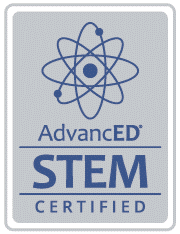There is nothing that can prepare you for seeing Mr. Nendick throw a piece of bread onto a direct flame because your directions on how to make a grilled cheese sandwich were not clear enough. - Rockhurst Senior
Can the research students write a teacher-proof procedure to make a grilled cheese? Stay tuned to find out pic.twitter.com/iUm5s7bUW4
— RHS Science (@SciRHS) August 31, 2020
I first fell in love with science during the 2nd day of my 6th grade year at St. Peter’s Grade School. On the first day, legendary science teacher Mr. Jacobsen asked us to write all of the steps necessary to make a peanut butter & jelly sandwich. On the 2nd day, he came prepared with all of the ingredients and we spent the class laughing as he botched one sandwich after the other due to the fact that our directions were not specific enough.
The moral of the day was that in an experiment, procedure is everything, and every contributing factor to the experiment needs to be explained to its maximum. - Rockhurst Senior
Mr. Tim Nendick, engaged Rockhurst High School students enrolled in the Fundamentals of Science Research course in a similar exercise to kickoff the 2020-2021 academic year. Below are some more reflections from his students.
Well, it's good this isn't a culinary class pic.twitter.com/5t892F1T2z
— RHS Science (@SciRHS) August 31, 2020
We started off class with talking about grilled cheeses, which was rough because we had lunch an hour later. We went through a reddit post slandering any grilled cheese that contained meat, vegetables or anything else. We were asked to write a procedure on how to make grilled cheese. I thought we were just going to talk about it in class, but instead Mr. Nendick said, “Okay, let's cross the hallway into the lab. The whole class was excited because we were gonna make grilled cheese during school. How wrong we were. Mr Nendick did everything he could to show us our directions were horrible. He opened a container of butter with an electric saw then took every direction literally. This continued until we thought we had the perfect procedure, until he would completely destroy the sandwich from one slightly off direction. This was both an entertaining project and valuable because it taught us what type of standards we would be held to for our research and projects this year.
To demonstrate the importance of procedural clarity and how to make the best piece of culinary art, Mr. Nendick led us into… the chemistry lab? After over viewing each of our instructions fit for a Ramsey cook book, he began making the grilled cheeses. One after the other, melting the cheese in its plastic, cutting through the bag of bread with a saw, and even placing the tub of butter directly onto an open flame. All of this to demonstrate in the bluntest way possible why being clear in your directions is supreme to the success of the experiment.
After the grilled cheese experiment, I realized the importance of a specific scientific procedure. Initially, I assumed Mr. Nendick knew how to complete common tasks, such as opening a package of cheese or buttering a piece of bread. It became frustrating when Mr. Nendick would take the instructions literally. For example, he put the entire package of cheese on the bread instead of putting only a single slice on the bread. This is because the instructions told him to put cheese on the bread. These frustrating moments caused me to alter my instructions very frequently. I attempted to lay out every component needed to construct a grilled cheese. Overall, I learned that procedures need to be very detailed. One should not assume that the reader of a procedure knows what to do.
One of the most annoying mis-readings he made was when he was instructed to place the pan on the stove and he put it on the stove sideways.
Human behavior is weird. Something as small as putting mayo on a grilled cheese is egregious to some of us when we see it. This can be compared to when someone misunderstands a set of instructions, or makes a small mistake. This is frustrating to us. Why is that? Based on my knowledge, the repetitive disregard for our behavioral norms that are ingrained in our minds sets off alarms in our brain that make us uncomfortable. That combined with the knowledge that the one making these mistakes knows they are doing so is why it was so frustrating. As a scientist, it should become a learned behavior that I look at things such as procedure more empirically, and really focus on the small details that seemingly don’t matter to anyone else but scientists.
This demonstration was beyond frustrating. Not only did Mr. Nendick promise to make grilled cheeses for us, but he did so with enthusiastic cheer. I had gotten little to no sleep the night before, and I also had not eaten breakfast. Each failed attempt at making a grilled cheese was like prodding the bridge of my nose with a toothpick. It was pure torture. That being said, the exercise was extremely helpful. It made me aware of how to write a procedure. I had to think, “how would a complete idiot interpret this?” That question is extremely prevalent in my everyday life. I have been told, as I’m sure many other “book smart” people have been told, that I lack even the most basic form of common sense. Keeping that in mind, I think I can go forward being more clear and concise when writing procedures to make sure that the experiment is carried out successfully and no one gets hurt. And, even better, no one will go home hungry.
I wasn’t entirely sure about my decision to take this class over another AP science course. However, I can already predict that this will be my favorite class this year, no matter what. In the end, the moral of the story was that in a field such as research, details simply matter. If you want your experiment to have legitimate results, you must be able to consistently record the desired results. The only way to do so is through repeating the experiment. In addition, it’s even better if someone ELSE could reproduce the results. Thus, it is crucial for any researcher to include the most minute details in his/her instructions for reproducing an experiment.




Comments